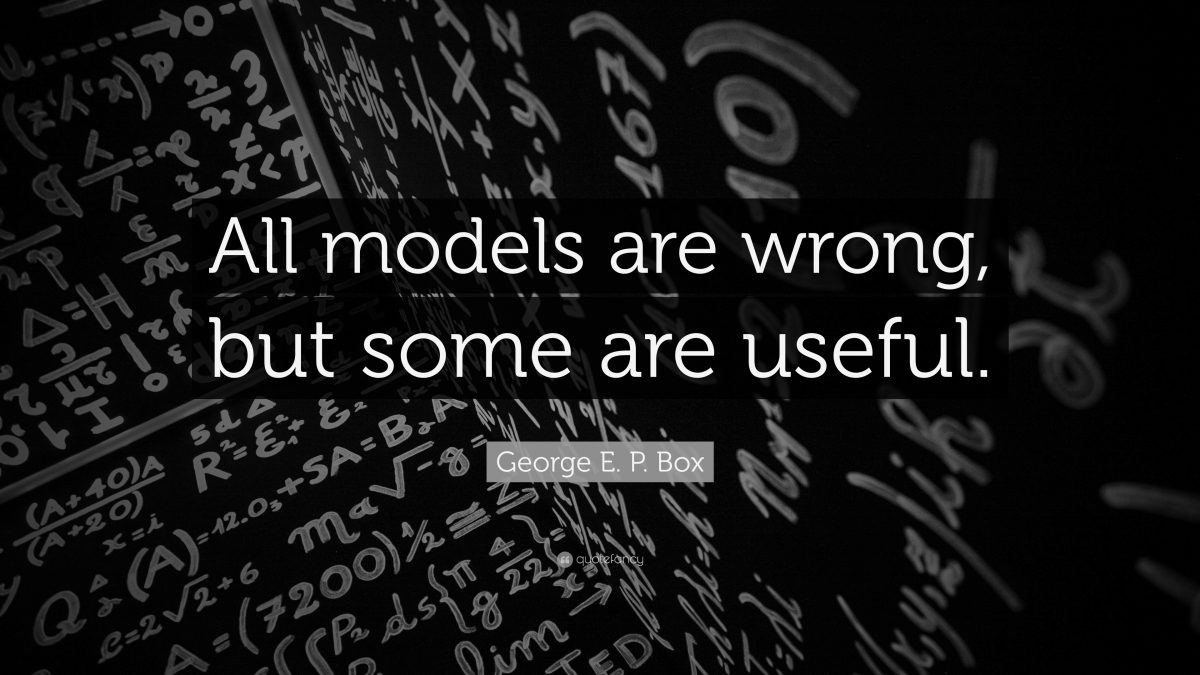Introduction
In the pursuit of understanding and navigating the complexities of the world, we often rely on mental models that shape our perceptions and guide our decision-making processes. One such model is the concept of All Models Are Wrong. Contrary to what its name may imply, this mental model acknowledges the inherent limitations and imperfections of our models and emphasizes the importance of recognizing their fallibility. In this blog post, we will delve into the All Models Are Wrong mental model, its relevance in decision making, its anchoring in human psychology, and its prevalence in our daily lives.
Understanding All Models Are Wrong
All Models Are Wrong is a concept that highlights the idea that no model or representation can perfectly capture the complexity and nuances of reality. Every model is an approximation or simplification of reality, and therefore, inherently flawed. It emphasizes the importance of understanding the limitations of our models and being cautious when relying on them for decision making.
Relevance in Decision-Making Processes
The All Models Are Wrong mental model holds significant relevance in decision making, as it reminds us to approach models with skepticism and humility. By acknowledging that our models are imperfect representations of reality, we can avoid the trap of placing undue confidence in them. This awareness encourages a more cautious and objective approach to decision making, taking into account the uncertainties and limitations associated with our models.
Anchoring in Human Psychology
The All Models Are Wrong mental model is deeply rooted in human psychology. Our brains constantly seek patterns, simplify information, and construct mental models to make sense of the world. While this cognitive process is essential for our understanding, it can also lead to biases and the tendency to believe that our models are more accurate than they actually are. This phenomenon, known as the Model Fallacy, often influences our decision-making processes.
Examples of All Models Are Wrong
- Personal Life Decisions: Imagine an individual using a self-help book as a model for achieving happiness and success. While the book may provide useful insights and strategies, it is an oversimplified representation of the complexities of human experience. Rigidly adhering to the book’s principles without considering personal circumstances and individual differences may lead to disappointment and unfulfilled expectations.
- Business Scenarios: In business, financial models are frequently used to predict future outcomes and guide investment decisions. However, these models are based on assumptions, projections, and historical data, all of which may not accurately capture the ever-changing dynamics of the market. Relying solely on these models without considering real-time data and market shifts can lead to flawed investment strategies and financial losses.
- Public Policy-Making: When crafting public policies, policymakers often rely on economic models and simulations to predict the potential impact of different interventions. However, these models are simplifications of complex social systems and cannot account for all variables and contingencies. Failing to acknowledge the limitations of these models can result in ineffective policies and unintended consequences.
Mental Biases Contributing to All Models Are Wrong
Several mental biases contribute to the All Models Are Wrong mental model and reinforce the tendency to place unwarranted trust in our models:
- Overconfidence Bias: Our tendency to be overly confident in the accuracy of our models and predictions can lead to unwarranted certainty. This bias can make us overlook uncertainties and potential flaws in our models, leading to misguided decision making.
- Confirmation Bias: Our inclination to seek information that confirms our existing beliefs and models can create a self-reinforcing loop. We selectively focus on data that supports our models while disregarding or downplaying contradictory evidence, further distorting our decision-making processes.
- Anchoring Bias: Our tendency to rely heavily on initial information or anchor points can bias our models and subsequent decisions. Once a model or assumption is established, it becomes challenging to deviate from it, hindering our ability to update our understanding of the situation accurately.
Strategies to Mitigate All Models Are Wrong
- Embrace Uncertainty: Recognize and accept that all models are imperfect representations of reality. Embracing uncertainty helps foster a mindset of curiosity and continuous learning, enabling you to be more open to alternative perspectives and updates to your mental models.
- Validate and Update: Regularly evaluate and update your models based on new evidence, feedback, and real-time data. Seek out diverse sources of information and perspectives to challenge and refine your existing models. Encourage a culture of intellectual humility and openness to feedback within your decision-making process.
- Use Multiple Models: Employ a multi-model approach by considering different perspectives, models, and sources of information. By incorporating a variety of models, you can gain a more comprehensive understanding of the territory and mitigate the risk of relying too heavily on a single flawed model.
- Continuous Evaluation: Regularly assess the accuracy and effectiveness of your models. Monitor their performance, compare them to real-world outcomes, and adjust them accordingly. Foster a culture of ongoing evaluation and adaptation in your decision-making processes.
Conclusion
The All Models Are Wrong mental model serves as a valuable reminder of the limitations and imperfections inherent in our models. By embracing the uncertainties and fallibility of our mental representations, we can make more objective and informed decisions. Being aware of the psychological biases that contribute to the Model Fallacy and employing strategies such as embracing uncertainty, validating and updating models, using multiple models, and continuous evaluation, we can navigate decision-making processes more effectively. Ultimately, the awareness and active avoidance of the All Models Are Wrong trap can lead to better decision outcomes, both in our personal lives and in broader contexts such as business and public policy-making.
